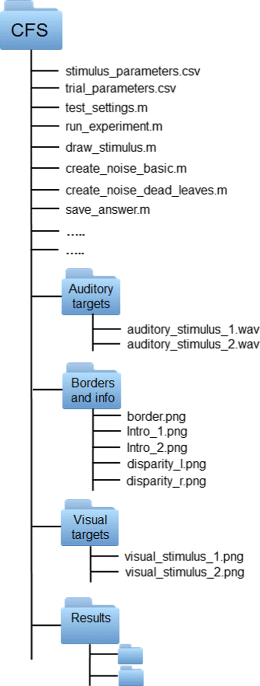

- Matlab 2008 psychportaudio zip file#
- Matlab 2008 psychportaudio trial#
- Matlab 2008 psychportaudio Pc#


WindowPtr: Numerical value specifying the window for the stimuli to be printed to.ĮT: Optionally skip connecting the eyetracker via the numerical input 0. The name of the list of trials to be loaded. runTrialBlock(arg1,arg2,arg3,arg4,arg5,arg6,arg7) OR (this is the same function as the one listed above, only using the defined variable names listed below in the Arguments section):Įx. runTrialBlock(‘ExpATrials’,5,ETstruct,’RANDOM’,’FEEDBACK’,’ExpA/’,) = runTrialBlock(trialList,windowPtr,ET,order,feedback,folder,pictureCoords)Įx. This function will return percent correct ( correctness) from the trials to the main program so that the value can be easily used to evaluate performance. PictureCoords allows the experimenter to place the image stimuli in any coordinates desired. Order specifies whether the trials are presented sequentially or randomly,įeedback specifies which type of feedback to give the subjects (no feedback for artificial lexicon testing, feedback for artificial lexicon learning, and click until correct most likely for real words),įolder specifies where to access the stimuli if they are in a different folder from the one being worked out of, and The optional arguments ET, order, feedback, folder, and pictureCoords can be altered depending on the needs of the experiment.
Matlab 2008 psychportaudio trial#
TrialList and windowPtr must be specified so that the function knows which trial list to display on which screen. This function takes a specified list of trials (pictures to be shown to and sounds to be played for the subject) and runs through them in a specified order. This function takes as input a cell array specifying a block of trials (includes drawing the test stimuli to the screen, playing the audio files, etc.) and allows the user to connect the eyetracker, specify trial order, and specify the type of feedback to be given to subjects.
Matlab 2008 psychportaudio Pc#
It is possible that problems arise when trying to run some of these functions on a PC or with newer versions of MATLAB. Happy experimenting!ĭisclaimer: These functions were created in MATLAB version 2007-2008 on a Mac, for use with Macs. Please note that comments are disabled on all pages. If you need help beyond what the website provides, there is a Help page listed on the top bar with information to get in contact with Sarah Creel.
Matlab 2008 psychportaudio zip file#
Demo Materials: If you hover over the Demo Walkthroughs link, a drop down menu labeled Demo Materials will appear. This page is where you can download the zip file containing all of the materials for the demos (basic functions with internal comments, text files, stimuli, etc).This page has step-by-step instructions that will guide you through downloading and using these functions on your own computer. It will provide you with a complete list of the files that you will need to run each function’s demo, and will generally serve as a troubleshooting guide for running the demos. Demo Walkthroughs: On the top navigation bar, you will find a page named Demo Walkthroughs.If you would like to download a copy to your computer, there are links at the bottom of each post where you may do this. Each read-me walks you through how the function works by detailing the input arguments and by providing examples. Read Me’s: Below this post are several other posts that function as read-me’s for the eight functions on this website.On this website, you will find several things of use to you, described below. The goal of this website is to make our commonly-used MATLAB functions available to other researchers, so that they may build off of what we have already created for their own experimental procedures. cartoon characters perform actions on the screen while a voice identifies the character). Because we also collect eyetracking data on our preschool subjects, these experiments must be coded in MATLAB for precise timing data. As a result, our experiments are made more engaging for a younger audience (e.g. Our lab is a developmental lab, with focus on 3-5 year old preschoolers’ word learning. As many developmental researchers know, it is simple to ask an adult to perform hundreds of repetitive trials in front of a computer screen, but it is no easy task to ask children to do the same thing (while still obtaining reliable data). Any opinions, findings, and conclusions or recommendations expressed in this material are those of the Professor Creel and her lab, and do not necessarily reflect the views of the National Science Foundation. This material is based upon work supported by the National Science Foundation under Grant Number 123-0003. Here you will find some of the most-used MATLAB functions for the protocols run in the Language and Sound Recognition Lab, under the direction of Dr. This is the Modifia ble Language Experiment database (abbreviated MOLE).


 0 kommentar(er)
0 kommentar(er)
